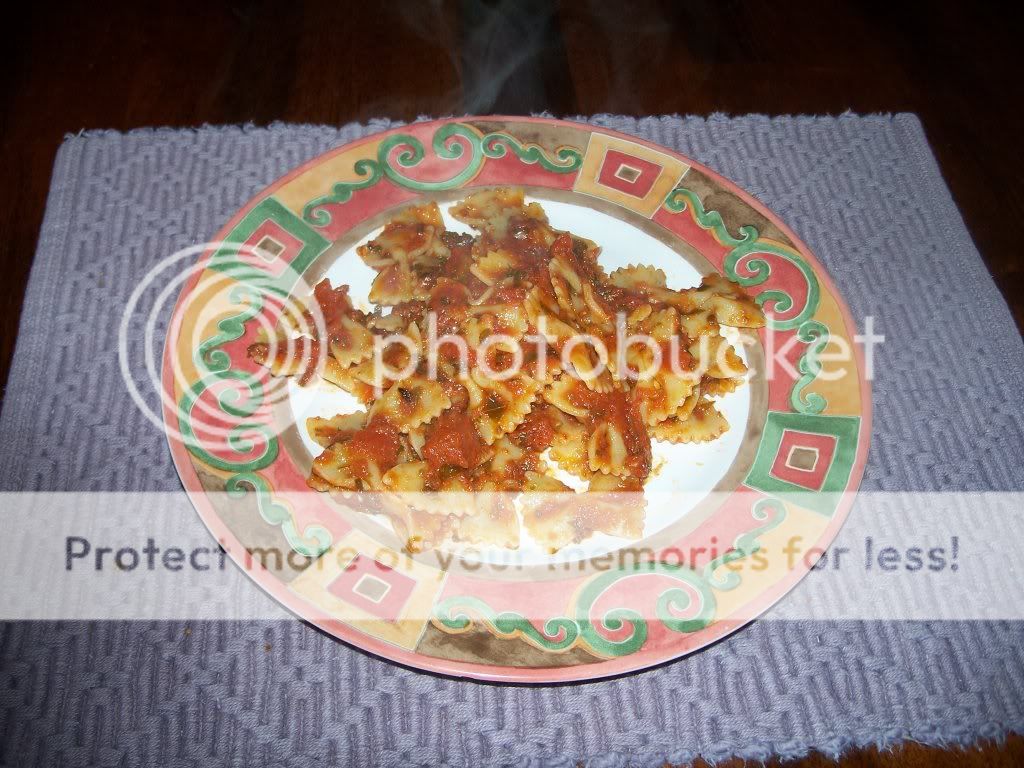 Sauce. A staple in modern Italian cuisine, tomatoes were first considered a "botanical curiousity" instead of an actual food item. Many feared they were poisonous. Somewhere, someone got it right. Tomatoes can easily grow in the soils of Southern Europe, especially Spain and Italy. By the 17th century, tomatoes were widely used in Southern European dishes.
Sauce. A staple in modern Italian cuisine, tomatoes were first considered a "botanical curiousity" instead of an actual food item. Many feared they were poisonous. Somewhere, someone got it right. Tomatoes can easily grow in the soils of Southern Europe, especially Spain and Italy. By the 17th century, tomatoes were widely used in Southern European dishes. "The tomato, initially regarded as an ornamental fruit and later adopted as a food, was an exotic curiousity that first appears in the writings of P.A. Mattioli and Jose de Acosta, travelers and naturalists. Apart from these sources, allusions to its consumption are very rare. Costanzo Felici tell us...that the usual "gluttons and people greedy for new things" did not realize they could eat the tomato as they would eat mushrooms or eggplants, fried in oil and flavored with salt and pepper. Although we must not exclude the possibility that tomatoes were consumed at an earlier date by the common people, it is only at the end of the seventeenth century that we observe their inclusion in elite cuisine, thanks to the Neapolitan recipe collection of Antonio Latini. Iberian influences may be detected in their adoption for culinary purposes, since various recipes that call for tomatoes are designated as "in the Spanish style." Among these is a recipe for "tomato sauce," which is flavored with onions and wild thyme "or piperna" and subsequently adjusted to taste by adding salt, oil, and vinegar. With a few modifications, this preparation was to enjoy a remarkable future in Italian cuisine and in the industry of preserved foods. The custom observed in ancient and medieval times, as well as during the Renaissance, of serving sauces as accompaniments to "boiled foods or other dishes"--as Latini expresses it in this instance--facilitated the acceptance of the tomato by integrating it into an established gastronomic tradition. For the same reason, it gained widespread currence in Italian cooking in the eighteenth and nineteenth cneturies. Panunto in Tuscany, Vincenzo Corrado in Naples, and Francesco Leonardi in Rome all include it in their recipe books."---Italian Cuisine: A Cultural History, Alberto Capatti & Massimo Montanari [Columbia University Press:New York] 1999 (p. 42-3)
There even may be a few of you out there who use the term "gravy" to define a tomato sauce. Sorry, because of traditional culinary definition, a gravy needs to be meat based. Since this is a tomato base, you are out of luck.. call it sauce.
A sauce has so many complex flavors, and there is more than just one sauce, and one for every occasion. There are sauces for winter, sauces for weddings, sauces for summer. You name it. I have come to find that a good sauce is just like a good stew. Not one recipe should be written in stone, and should be changed to suit the needs of the person cooking it, or the ones consuming it.
Please take the recipe I am sharing with you and make your own variations. This sauce is made to my tastes, and if you like the same thing I do.. follow it to key, I won't mind :)
2 lbs large ripe plum tomatoes
1/2 cup olive oil
1/2 cup minced fresh basil
1/2 cup minced fresh parsley
3 tablespoons minced fresh oregano
1/2 cup freshly grated parmigiano
1/2 teaspoon sugar
1 teaspoon salt
1/2 teaspoon fresh ground black pepper
2 bay leaves
Now, I prefer a traditional style sauce. That means a nice chunky sauce, they didn't have blenders and food processors back in the 16th century!
The 1st step you need to do is blanch your tomatoes. Some people find this kinda difficult. It's quite easy, even though I don't have pics for you. Take your tomatoes and cut an X into the skin on one end. Once you have them all X'd, boil some water in a pot that will fit all the tomatoes and keep them submerged. When you reach boil, add the tomatoes and start your timer for 1 min. Prepare an ice bath. After 1 min, take the tomatoes out of the water and add them to the ice bath. Let them sit in there for another minute. The skin should fall right off, or come off with very little effort. From here, just slice them in half and remove the seeds.
Add to the sauce pot and start crushing and squeezing the tomatoes by hand. Ahh, love that feeling don't ya? Add the rest of your ingredients and cook on Very Low heat. Let it simmer with the cover on for about an hour. Make sure to stir every 15 mins or so. You can tell when the sauce is ready when it boils instead of simmers on Very Low heat. Time to remove the bay leaves and add to your favorite pasta or set aside and let cool to room temp. When it's cooled to room temp, remove the bay leaves and store in a container in the fridge. It should keep for a week in there.
This recipe is modified for around 2-4 servings depending. You will have enough sauce to cover about 1lb of pasta. If you wish to cook more, just keep the ratio of things and increase the measurements, but NEVER increase the heat. Always let it simmer on Very Low heat until done. So, worse comes to worse, your sauce will have a longer simmer time. maybe 2-3 hours if you double up.
Again, a sauce is not supposed to be written in stone. Every family has their own recipe, and every occasion has their own. Develop a sauce that you like. There are many ways to get the flavors and textures you are looking for.
Blend or puree the tomatoes after blanching them and removing the seeds to get a less chunky, more smooth modern sauce. Take half of the tomatoes and blend them if you want a slightly chunky sauce. Add some garlic or spice in there if you want to heat things up or get some garlic flavor. One friend actually suggested to replace the olive oil in the recipe with garlic oil (recipe coming soon) to get the flavor so the garlic cloves arent in there.
Mix it up, find what you like. As for the Bearded Chef's personal recipe? Sorry, that's trusted information. :)




No comments:
Post a Comment